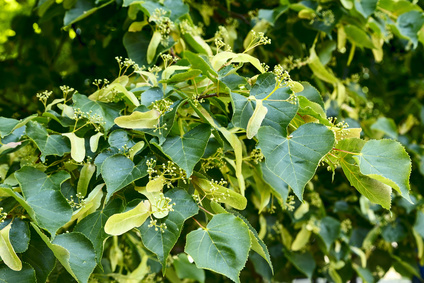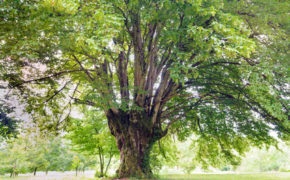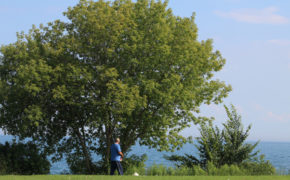
Get a quick no obligation quote It’s free and will only take a jiffy!
Lime Tree
Everything you need to know about the common lime tree, from identification tips to typical characteristics; how to spot disease and the best way to maintain a lime tree.
The common lime tree is a deciduous broadleaf tree that is native to the United Kingdom and other parts of Europe.
There are various species of lime tree including hybrid species. A look at the underside of the lime tree leaf will reveal the true species. As for the common lime, tufts of white hairs will tell it apart from the small leaved lime which has rusty red hairs, and the large leaved lime which has hairs all over its underside rather than just tufts.
The common lime is a hybrid species of the small leaved and large leaved lime and tends to be grown ornamentally in the UK, although it can be found in the wild growing as a natural hybrid.
General Facts
| Known as | Common lime, European basswood |
| Latin name | Tilia x europaea |
| Location | UK native, Europe |
| Foliage | Deciduous |
| Lifespan | Up to 400 years |
Characteristics
| Height | Up to 30 metres |
| Spread | Up to 15 metres |
| Appearance | A tall and often wide tree that shows characteristics of both the small leaved and the large leaved lime tree. Bark is pale grey-brown and erratically ridged. There are large burrs and abundant sucker shoots at the tree’s base, and the twigs are thin and brown, reddening in the sun. |
| Leaves | Common lime tree leaves are heart shaped and dark green turning to dull yellow before they fall in autumn. Leaves are flimsy and grow to around 6-10cm in length. The leaf base is lobed and somewhat lopsided, and the underside of the leaf displays tufts of white hairs, which is the main identifier for the hybrid species. The leaves start life on long stalks as small, red double-scaled buds that look at bit like a pair of boxing gloves. |
| Flowers | Lime flowers contain both male and female parts. They are yellowy white with five petals and hang together in drooping clusters of 2 to 5. |
| Fruit | After being pollinated by insects, the flowers transform into oval-round fruits with a pointed tip. These are not, as is widely believed, the citrus lime, which comes from a completely different plant. |
| Found in | Residential and urban areas; estate gardens; formal gardens, partly shaded woodland. |
Conditions
| Ideal soil | Moist but well drained, chalk, clay or sand |
| Soil pH | Neutral, alkaline |
| Aspect | North, south, east or west facing |
| Exposure | Full sun to partial shade; Sheltered |
Threats
| Pests | Aphids, gall mites, lime nail gall, sap-sucking insects |
| Diseases | Fungal disease, bleeding cankers, wilt |
Lime Trees and Wildlife
The leaves of the lime tree are a favourite of numerous species of moth. These include the lime hawk and the scare hook-tip. Aphids are also big fans, and hoverflies, ladybirds, bees and various species of birds flock to feed on the green flies. Lime flowers are a rich source of pollen and nectar for numerous insects, including bees.
The deadwood of the lime tree is a haven for wood-boring insects and provides excellent nesting opportunities for birds.
Lime Tree Symbolism and History
Lime trees have been linked to fertility throughout history and are a symbol of liberty in Switzerland and France where they were planted following different battles.
Lime blossom was used during times of war to make a soothing tea.
The Importance of Lime Trees
The close grained appearance and soft texture of lime tree timber makes is perfect for intricate carving and turnery as well as fine furniture making. In fact it was the timber of choice for Dutch wood carver Grinling Gibbons, who was commissioned to carve for high profile locations such as Blenheim Palace, Hampton Court and Chatsworth.
Lime bark was used to make rope and honey bees are very much attracted to lime flowers.
When coppiced, lime trees are often used for fuel and to make everything from cups and ladles to Morris dancing sticks.
Caring for a Lime Tree
Annual pruning is very important for the lime. It reduces the chance of disease by improving airflow, and it strengthens the limbs too. Pruning also allows more sunlight to penetrate, which is vital to maintain the health of a tree.
It is important to use the right type of sheers for lime pruning, and you must never prune a frost damaged lime tree until you can see new growth. Winter pruning is out of the question due to the frost sensitivity and should be avoided unless there is an immediate risk of falling branches. Removing larger branches can leave the bark exposed, and this could make the tree prone to sunburn.
It is clear to see that pruning a lime tree calls for expert knowledge, which means it is best to hand lime tree care over to a qualified tree surgeon if you really want your tree to enjoy the best possible health and maintain an attractive appearance.
Regular checks should be made of your lime tree. Look out for red or yellow tubular structures on the upper leaf surface which could denote lime nail gall. If you see a dark, sticky oozing fluid then this is likely to be bleeding cankers cause by fungal disease. You may also need to clear the tree of aphids which you can do by blasting with water. Of course, if you are particularly concerned about the health of your lime tree, you should not hesitate to consult with a suitably qualified tree surgeon.
If you have a lime tree that would benefit from professional attention, why not contact T.H. Tree Services? As fully qualified and highly experienced tree surgeons, we can offer detailed knowhow and expertise across all elements of lime tree care. For a free, no-obligation quotation, call us on 01268 642814 or get in touch here.
Had a fallen tree in the early hours of Monday morning, called for quote and the team had it cleared on the same day. Really good communication when the lads were onsite and did a great job. Lots of pride in their work shown with the thorough clear up. Would thoroughly recommend.
Thank you Stuart for your kind review. We were glad to be able to help you with your fallen tree. If there's anything else you need in the future, please don't hesitate to get in touch.








